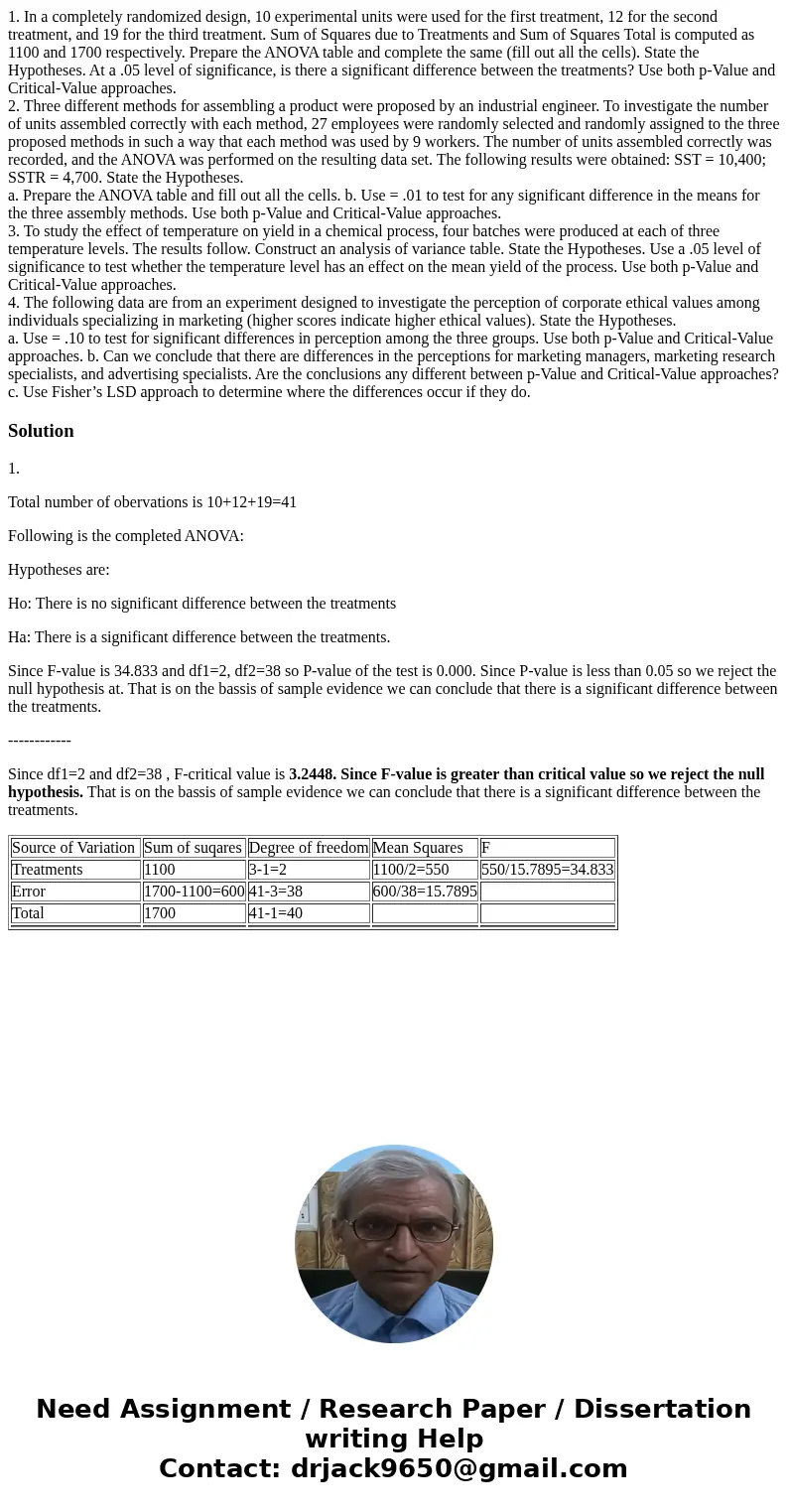1 In a completely randomized design 10 experimental units we
1. In a completely randomized design, 10 experimental units were used for the first treatment, 12 for the second treatment, and 19 for the third treatment. Sum of Squares due to Treatments and Sum of Squares Total is computed as 1100 and 1700 respectively. Prepare the ANOVA table and complete the same (fill out all the cells). State the Hypotheses. At a .05 level of significance, is there a significant difference between the treatments? Use both p-Value and Critical-Value approaches.
2. Three different methods for assembling a product were proposed by an industrial engineer. To investigate the number of units assembled correctly with each method, 27 employees were randomly selected and randomly assigned to the three proposed methods in such a way that each method was used by 9 workers. The number of units assembled correctly was recorded, and the ANOVA was performed on the resulting data set. The following results were obtained: SST = 10,400; SSTR = 4,700. State the Hypotheses.
a. Prepare the ANOVA table and fill out all the cells. b. Use = .01 to test for any significant difference in the means for the three assembly methods. Use both p-Value and Critical-Value approaches.
3. To study the effect of temperature on yield in a chemical process, four batches were produced at each of three temperature levels. The results follow. Construct an analysis of variance table. State the Hypotheses. Use a .05 level of significance to test whether the temperature level has an effect on the mean yield of the process. Use both p-Value and Critical-Value approaches.
4. The following data are from an experiment designed to investigate the perception of corporate ethical values among individuals specializing in marketing (higher scores indicate higher ethical values). State the Hypotheses.
a. Use = .10 to test for significant differences in perception among the three groups. Use both p-Value and Critical-Value approaches. b. Can we conclude that there are differences in the perceptions for marketing managers, marketing research specialists, and advertising specialists. Are the conclusions any different between p-Value and Critical-Value approaches? c. Use Fisher’s LSD approach to determine where the differences occur if they do.
Solution
1.
Total number of obervations is 10+12+19=41
Following is the completed ANOVA:
Hypotheses are:
Ho: There is no significant difference between the treatments
Ha: There is a significant difference between the treatments.
Since F-value is 34.833 and df1=2, df2=38 so P-value of the test is 0.000. Since P-value is less than 0.05 so we reject the null hypothesis at. That is on the bassis of sample evidence we can conclude that there is a significant difference between the treatments.
------------
Since df1=2 and df2=38 , F-critical value is 3.2448. Since F-value is greater than critical value so we reject the null hypothesis. That is on the bassis of sample evidence we can conclude that there is a significant difference between the treatments.
| Source of Variation | Sum of suqares | Degree of freedom | Mean Squares | F |
| Treatments | 1100 | 3-1=2 | 1100/2=550 | 550/15.7895=34.833 |
| Error | 1700-1100=600 | 41-3=38 | 600/38=15.7895 | |
| Total | 1700 | 41-1=40 | ||

 Homework Sourse
Homework Sourse